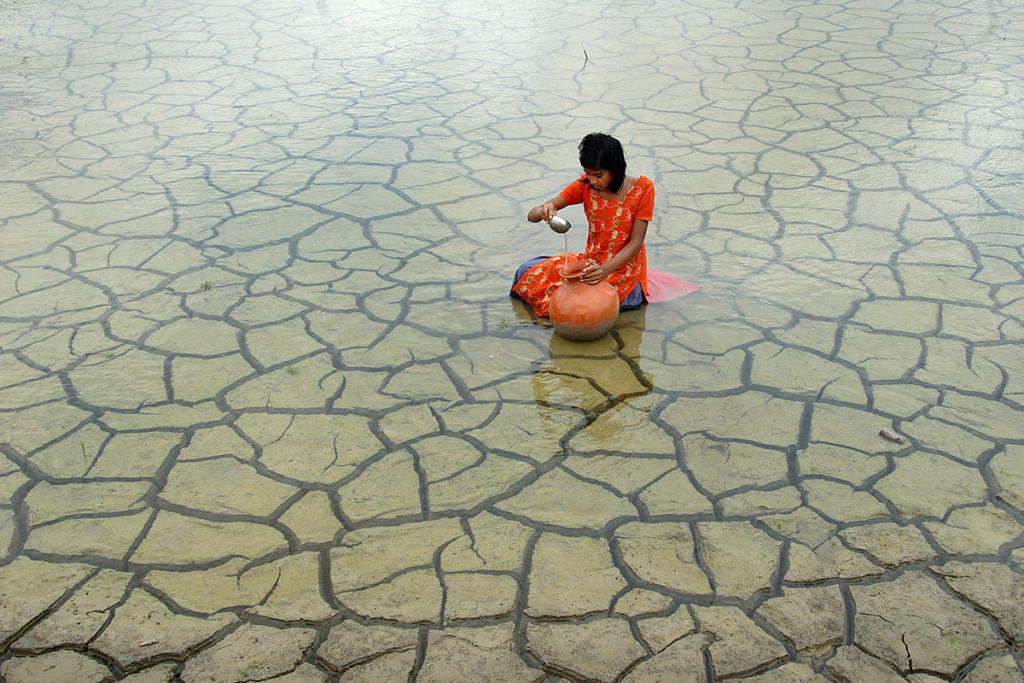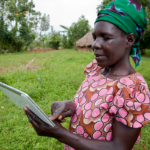Climate change is personal for me. Excessive rains and erratic weather events exacerbate the effects of flooding – and its consequences – for communities like mine. As a native Floridian, I know poor water quality and over development can damage pristine coasts and threaten livelihoods. Outside the United States, in places like Bangladesh, India, Pakistan, and in many other developing contexts, the effects of climate change are also being felt on the village and household levels.
This post looks at three recently published climate change forecasting models and how they show the potential impact on water quality and socio-economic wellbeing. The summary of the analysis can hopefully help shape an evidence-driven response to mitigate the effects of climate change in the decades to come.
What do the three forecasting models show?
I selected three articles that model how climate change – i.e., increased temperatures, extreme rainfall and extreme weather events – impacts microbial surface water quality. Microbial surface water quality affects drinking water, agricultural usage and the presence of disease. Of course, changes in water quality have implications for health, economic wellbeing and livelihoods. All three models reviewed for this post share the common assumption that water flows, health and socio-economics are inextricably linked and face increasing stresses due to climate change.
Following the observation that E. coli concentrations vary due to population density, urbanization levels, regional water treatment capabilities, and floods or droughts, Iqbal, et al. combine a Soil and Water Assessment Tool (SWAT) and its bacterial sub-model. This combination allows the authors to incorporate the assumptions that E. coli loads are directly caused by human or point-source activity, exacerbated by temperature-dependent decay, and controlled by effective water treatment. The authors then test for the effects of temperature fluctuation and precipitation levels.
Iqbal, et al. conduct their modeling through the years 2050 and 2100 under two scenarios: 1) strong population and livestock density growth, planned urbanization, improved wastewater treatment including manure treatment, and moderate climate change, and 2) strong population and livestock density growth with moderate urbanization, slightly improved wastewater treatment with no manure treatment, and strong climate change. Using the modified SWAT model and data from the International Panel on Climate Change, the authors find that E. coli loads increase in both scenarios by 111% in 2050 and by 201% in 2100, and that moderate climate change and urbanization with some water treatment reduces those loads by 60% and 78%, respectively.
Islam, et al. adapt a hydrodynamic model, the MIKE 21 FM, and a water quality model (ECOLab) to simulate concentrations of fecal indicator bacteria (FIB, which is E. coli and enterococci). This combination allows them to track contamination sources like rice paddy fields along the Betna River, and account for rainfall, temperature adjustments, and varying population densities along the river. The authors find evidence that strong population and livestock density growth with moderate urbanization, slightly improved wastewater treatment with no manure treatment, and strong climate change, lead to a 75% increase in microbial water concentrations. However, the authors also find that improved sewage treatment – for both point-source or runoff contamination – decreases FIB loads by approximately 98%.
The authors conclude that microbial concentrations, and nitrogen and phosphorus loads that decrease soil quality, could increase by over 75% by the 2090s. Additionally, they find these effects extend down the river systems and to the coast, and the effects are increased in both rainy monsoon seasons and dry seasons.
Whitehead, et al.’s modeling incorporates how increased population density leads to increased demand for irrigation and public supply, and how it accounts for changes in land use and daily changes in air, hydrological, and soil conditions— all assumptions accounted for in Iqbal, et al. and Islam, et al. The authors use data sets “downscaled” from three Global Climate Models (GCMs). They draw the additional conclusions from their results that droughts will be extended, and water flows will be altered across all five rivers – meaning a holistic approach to water management across the basins, and that considers monsoon and drought effects of climate change, is imperative.
Wrap-up
What does the new evidence tell us? Iqbal, et al. show that water treatment alone is insufficient to mitigate the health risks associated with the presence of E. coli, and that socio-economic growth needs to be strongly considered in urbanization approaches. Islam, et al. show that microbial contaminant loads, and the secondary effects of health risk and socio-economic downsides, are mitigated by the simple solution of wastewater treatment. Whitehead, et al. conclude that increases in microbial concentrations and decreases in soil quality extend down river systems and to the coast, in both rainy and dry seasons.
All three articles note that improved sewage treatment and sustainable socio-economic growth can only mitigate the toxic or deadly side effects of microbial contaminants. Additional measures – as described in Larson, et al. (2018) and Easton (2018), for example – provide other considerations that not only address the long-term outlook of climate change and water quality, but also take steps towards addressing important issues like gender-based and social gaps in climate change policy responses.
New evidence that fully engages all considerations can shape an evidence-driven response to mitigate the effects of climate change in the next 50 to 100 years – whether in developing contexts or in places more familiar to me, like my home in Florida. The three articles highlighted here are a great start.
Photo caption: An adolescent girl collects rainwater from drought-affected lower land in a rural area of West Bengal, India
Photo credit: © 2012 Prasanta Biswas, Courtesy of Photoshare



